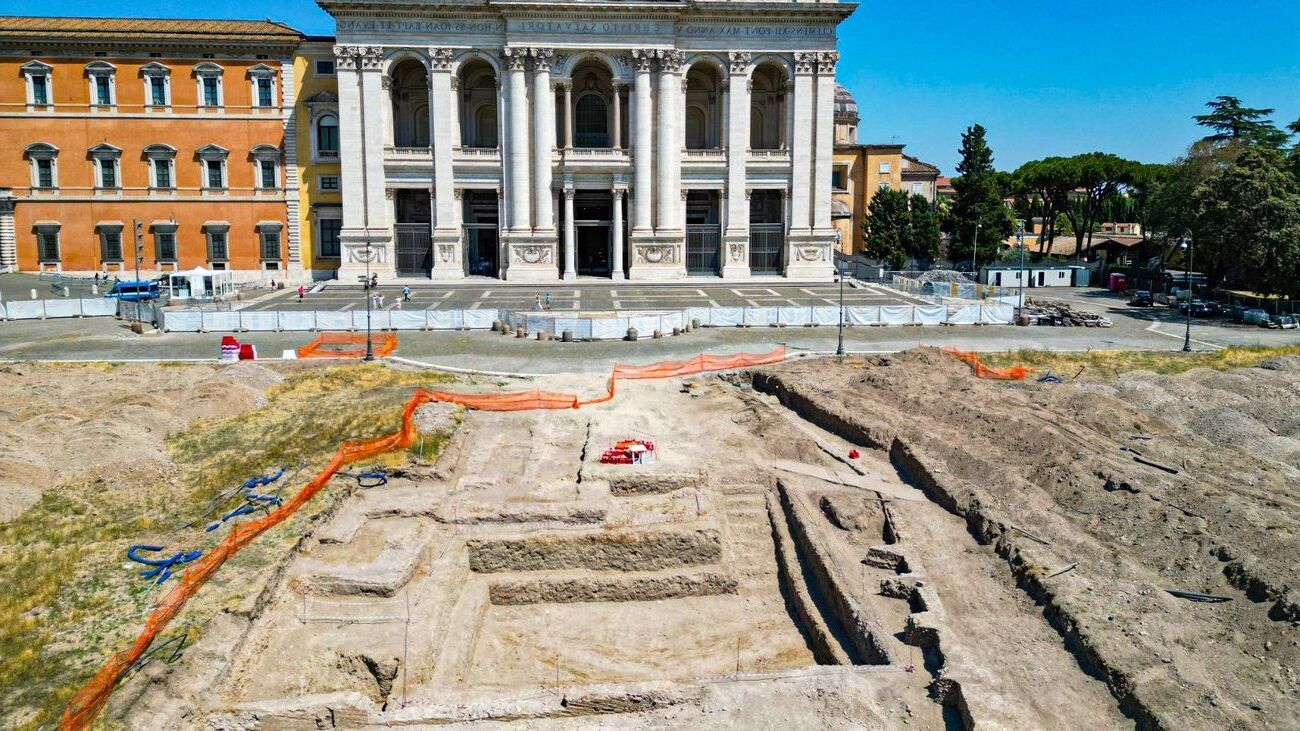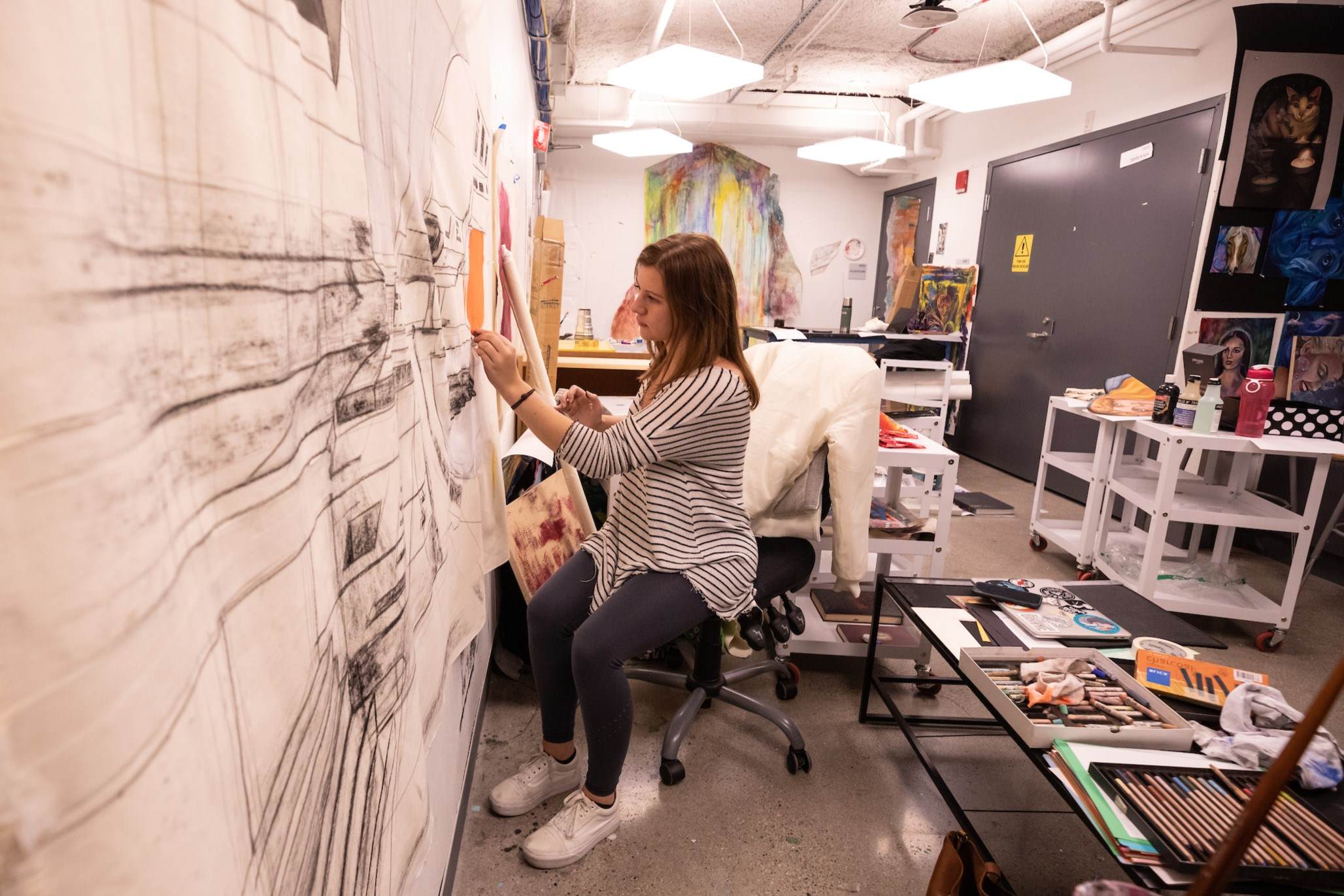
Ever wondered about the secrets hidden within the Patriarchio Papal Palace in Rome? This ancient residence, steeped in history, has witnessed centuries of pivotal events and housed numerous popes. Nestled in the heart of Vatican City, the palace stands as a testament to the grandeur and influence of the Catholic Church. From its stunning architecture to the priceless art collections, every corner of this majestic building tells a story. Whether you're a history buff, an art lover, or simply curious about the Vatican's inner workings, these 37 facts will give you a deeper understanding of this iconic landmark. Get ready to uncover the mysteries and marvels of the Patriarchio Papal Palace!
Key Takeaways:
- The Patriarchio Papal Palace in Rome, also known as the Lateran Palace, has been the primary residence of popes for nearly 1,000 years. It is a historical marvel with stunning art, architecture, and significant events.
- The palace's rich history and cultural significance have influenced art, culture, and architecture worldwide. It has inspired artists, hosted significant events, and continues to be a symbol of the Catholic Church's heritage.
The Patriarchio Papal Palace: A Historical Marvel
The Patriarchio Papal Palace in Rome is a treasure trove of history, art, and architecture. This iconic structure has witnessed centuries of events and transformations. Let's dive into some fascinating facts about this remarkable palace.
-
The Patriarchio Papal Palace, also known as the Lateran Palace, was the primary residence of the popes for nearly 1,000 years.
-
Emperor Constantine the Great donated the palace to the Bishop of Rome in the 4th century.
-
The palace is located adjacent to the Basilica of St. John Lateran, the cathedral church of Rome and the official ecclesiastical seat of the Pope.
-
The Lateran Palace was the site of five ecumenical councils, known as the Lateran Councils, which took place between the 12th and 16th centuries.
-
In 1309, Pope Clement V moved the papal residence to Avignon, France, marking the beginning of the Avignon Papacy.
Architectural Wonders and Artistic Treasures
The palace is not just a historical site; it is also a masterpiece of architecture and art. Here are some intriguing details about its design and artistic elements.
-
The original structure of the palace was heavily damaged by fire in 1308 and later rebuilt by Pope Sixtus V in the late 16th century.
-
The Scala Sancta, or Holy Stairs, located within the palace, are believed to be the steps Jesus Christ ascended during his trial before Pontius Pilate.
-
The palace houses the Chapel of St. Lawrence, which contains stunning frescoes by the famous Renaissance artist, Fra Angelico.
-
The Lateran Palace's Hall of the Popes features portraits of every pope from St. Peter to the present day.
-
The palace's architecture is a blend of various styles, including Romanesque, Gothic, and Renaissance.
Significant Events and Historical Moments
The Patriarchio Papal Palace has been the backdrop for numerous significant events throughout history. Here are some notable moments.
-
The Lateran Treaty, which established Vatican City as an independent state, was signed in the palace in 1929.
-
The palace served as a refuge for popes during times of political turmoil and invasions.
-
Pope Leo III crowned Charlemagne as the Holy Roman Emperor in the palace on Christmas Day in the year 800.
-
The Lateran Palace was the site of the infamous Cadaver Synod in 897, where the corpse of Pope Formosus was put on trial.
-
The palace was a center for the administration of the Papal States until the 19th century.
Modern-Day Significance and Preservation
Today, the Patriarchio Papal Palace remains a symbol of the Catholic Church's rich history and cultural heritage. Here are some facts about its modern-day significance and preservation efforts.
-
The palace is part of the Vatican Museums and is open to the public for tours and visits.
-
Extensive restoration work has been carried out to preserve the palace's historical and artistic elements.
-
The Lateran Palace is a UNESCO World Heritage Site, recognized for its cultural and historical importance.
-
The palace continues to host important religious ceremonies and events, including papal audiences.
-
The Vatican has implemented advanced conservation techniques to protect the palace's priceless artworks and artifacts.
Lesser-Known Facts and Curiosities
Beyond its well-known history and significance, the Patriarchio Papal Palace holds many lesser-known facts and curiosities. Here are a few intriguing tidbits.
-
The palace once housed the Vatican Library, one of the oldest libraries in the world, before it was moved to its current location in the Vatican City.
-
The Lateran Obelisk, located in the palace's piazza, is the tallest ancient Egyptian obelisk in Rome.
-
The palace's Triclinium Leoninum, a grand dining hall, features a mosaic depicting Christ giving his blessing to Pope Leo III and Charlemagne.
-
The palace has a secret passageway, known as the Passetto di Borgo, which connects it to the Vatican City.
-
The Lateran Palace was once home to a menagerie of exotic animals, including lions and leopards, gifted to the popes by foreign dignitaries.
The Influence of the Patriarchio Papal Palace on Art and Culture
The impact of the Patriarchio Papal Palace extends beyond its walls, influencing art, culture, and architecture worldwide. Here are some ways it has left its mark.
-
The palace's architectural style inspired the design of many other religious and secular buildings throughout Europe.
-
Renaissance artists, including Michelangelo and Raphael, drew inspiration from the palace's frescoes and sculptures.
-
The Lateran Palace's collection of ancient Roman artifacts has contributed significantly to the study of Roman history and archaeology.
-
The palace's influence can be seen in the design of other papal residences, such as the Apostolic Palace in Vatican City.
-
The Lateran Palace has been featured in numerous works of literature, art, and film, highlighting its enduring cultural significance.
Fun Facts and Trivia
To wrap up, here are some fun facts and trivia about the Patriarchio Papal Palace that you might find surprising.
-
The palace's name, "Lateran," comes from the Roman family that originally owned the land where it was built.
-
The Lateran Palace was once the site of a famous chess match between Pope Leo X and King Francis I of France.
-
The palace's gardens are home to a variety of rare and exotic plants, some of which were brought back by missionaries from distant lands.
-
The Lateran Palace has its own coat of arms, featuring the keys of St. Peter and the papal tiara.
-
The palace's bell tower, added in the 12th century, is one of the oldest surviving structures in the complex.
-
The Lateran Palace was the first building in Rome to have a public clock, installed in the 14th century.
-
The palace's grand staircase, known as the Scala Regia, was designed by the renowned architect Gian Lorenzo Bernini.
Final Glimpse at the Patriarchio Papal Palace
The Patriarchio Papal Palace in Rome is more than just a historical building. It’s a symbol of power, art, and culture. From its ancient origins to its architectural marvels, this palace has witnessed countless significant events. The frescoes and artworks inside tell stories of a bygone era, while the architecture showcases the brilliance of past craftsmen. Visiting this palace offers a unique glimpse into the rich history of the Catholic Church and Rome itself. Whether you're a history buff or just curious, the Patriarchio Papal Palace is a must-see. It stands as a testament to the enduring legacy of Rome and its influence on the world. So next time you're in Rome, make sure to add this magnificent palace to your itinerary. You won't regret it.
Frequently Asked Questions
Was this page helpful?
Our commitment to delivering trustworthy and engaging content is at the heart of what we do. Each fact on our site is contributed by real users like you, bringing a wealth of diverse insights and information. To ensure the highest standards of accuracy and reliability, our dedicated editors meticulously review each submission. This process guarantees that the facts we share are not only fascinating but also credible. Trust in our commitment to quality and authenticity as you explore and learn with us.


